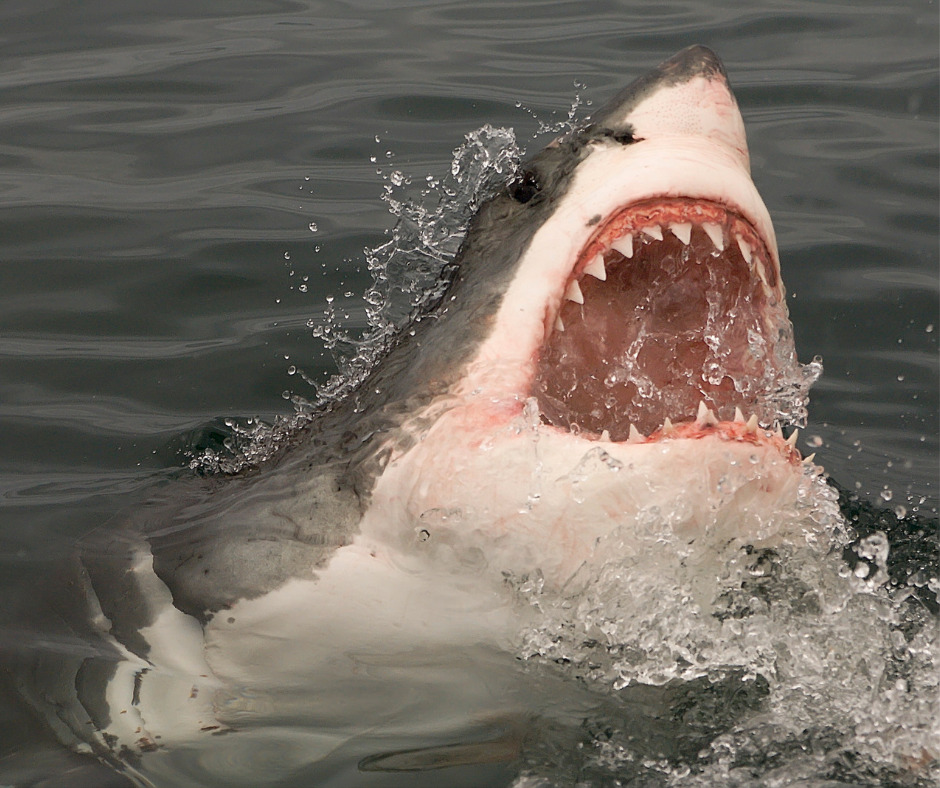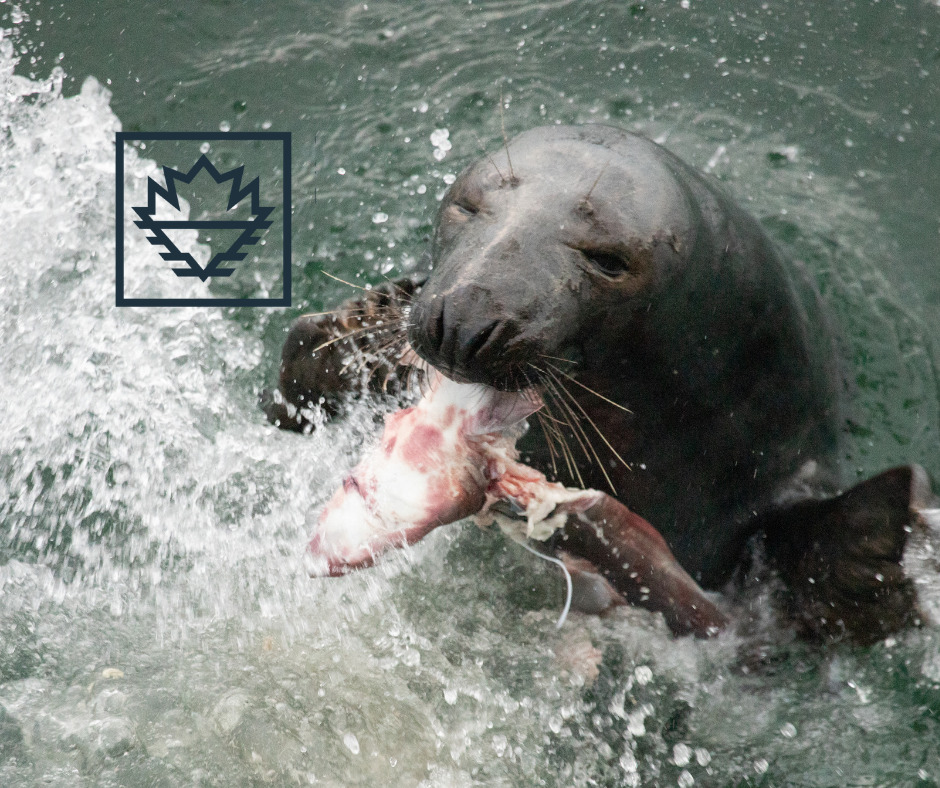A scientific team from the Department of Fisheries and Oceans Canada (DFO) marked nine great white sharks around Corps Mort and Île Brion from August 25 to August 30 during their annual monitoring mission for this apex predator in the Gulf of St. Lawrence. This ongoing monitoring, which has been taking place for three years around the Magdalen Islands, aims to assess the potential impact of great white sharks on the feeding behavior of grey seals (Fishing Impact, March 2023).
Researcher Xavier Bordeleau from the Maurice Lamontagne Institute (IML), specializing in pinniped ecology and predator-prey relationships, highlights that these are the first great white sharks in Canadian waters to be tagged with a combination of satellite and acoustic transmitters.
“The first tag is programmed to record information for one year, tracking the animal’s movements and diving depths. When it detaches, it sends us the collected data via satellite. The second tag, which is acoustic, has a lifespan of 10 years. We capture its signal when the animals pass near our hydrophones deployed in the environment. For the Magdalen Islands, we have a network of 10 acoustic receivers around the seal colonies of Rocher aux Oiseaux, Île Brion, and Corps Mort.”
Arriving in the Gulf from the United States, great white sharks come to feed during the summer and typically depart around mid-November when the water temperature falls below their preferred thermal comfort level of about 15°C. The Atlantic White Shark Conservancy of the Massachusetts Division of Marine Fisheries and the DFO’s Bedford Institute of Oceanography in Nova Scotia each established tagging programs in 2010 and 2017, respectively, to gain a better understanding of their distribution range.
Up until now, DFO had only managed to tag three of these endangered large fish. With IML joining the monitoring efforts in 2021 and the success of the 2023 tagging, there are currently 280 tagged animals, including 12 in Canadian waters.
“It’s exciting because it provides us with good visibility and acknowledges the expertise of DFO, IML, and the Magdalen Islands,” notes Xavier Bordeleau. “It also allows us to maximize our knowledge of the habitats these animals will use. Will they go elsewhere in the Gulf? We believe they will probably stay in Canadian waters longer than those tagged at Cape Cod.”
A TWO-FOLD BENEFIT
Referring to the expertise acquired in the Magdalen Islands, the IML scientist emphasizes the contribution made by the fishers and hunters Ghislain Cyr and Rodrigue Dubé to the 2023 great white shark mission. DFO achieved a two-fold benefit by combining their research on these apex predators with their annual surveys of the grey seal population in the Gulf, initiated by distinguished researcher Mike Hammill in the 1990s. Messrs. Cyr and Dubé facilitated the capture of 14 grey seals for muscle, fat, reproductive tract, jaw, and tooth samples, as well as stomach and intestinal samples, all intended to study both the diet and the nutritional state, sexual maturity, and age structure of the herd.
“In addition to quantifying the grey seal diet, all this information serves as data inputs for abundance and population dynamics assessment models,” says Mr. Bordeleau. “It’s a very important sampling that serves many objectives.”
The DFO team also includes several graduate students and a postdoctoral researcher studying various aspects, including the evolution of grey seal habitat use in the Gulf, their behavior, feeding locations, and the duration of time spent on haul-outs.
“It’s to understand how the species’ home range size has evolved over more than 30 years,” continues Xavier Bordeleau. “For example, there are individuals that always stay near Brion and have a small home range, while others move much more and have a large home range. So, it looks at how this changes over time with a larger number of animals compared to the early 1990s when there was much less competition between them and they didn’t have to disperse as much as today. We also look at how the duration of time spent hauled out and feeding may be affected by the presence of sharks.”
Interestingly, the remains of these grey seal samples served as bait for the great white sharks. “We only discard what is neither recoverable for meat nor for scientific samples,” assures the IML scientist. “And, just like the hunters noticed during last year’s commercial hunting activities, the sharks are naturally attracted to the boat by the presence of this activity.”
FIRST MIGRATION TRACKING
The nine great white sharks tagged in the Magdalen Islands are mostly subadult individuals, meaning they have not yet reached sexual maturity, measuring between 2.7 meters and 3.7 meters. Xavier Bordeleau is pleased that, for the first time, they will be able to track their migration to the American coasts and determine which colony they are associated with.
Currently, great white shark tagging in the United States primarily focuses on the aggregation site at Cape Cod, Massachusetts. “When animals are tagged in the United States, only a certain proportion of them migrate to Canadian waters,” he points out. “What’s interesting is that of all the animals we’ve seen and tagged, we haven’t seen any that already had a tag. This means they could potentially come from elsewhere, other types of aggregations in the United States. So, by tracking their southward migration, we will have the opposite information from what we’re used to. With satellite trajectories, we can see where their home base is, maybe even if they are associated with a combination of aggregations in the United States. We can also track their return migration to Canadian waters next year and see, for example, if they stop in the Bay of Fundy and how long they spend there or if they come directly to the Gulf.”
As for the Requin du Brion 2023 expedition, led by Jeffrey Gallant of the St. Lawrence Shark Observatory aboard the EcoMaris and garnering significant media attention recently, the IML researcher explains that it was an independent initiative from the scientific research work conducted by DFO. “It’s great to talk about the great white shark and raise awareness, but both teams have distinct respective objectives,” concludes Xavier Bordeleau.



